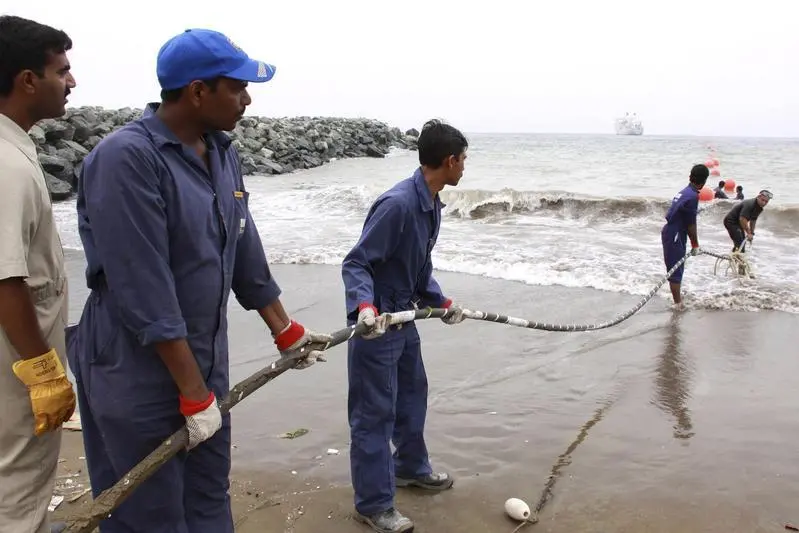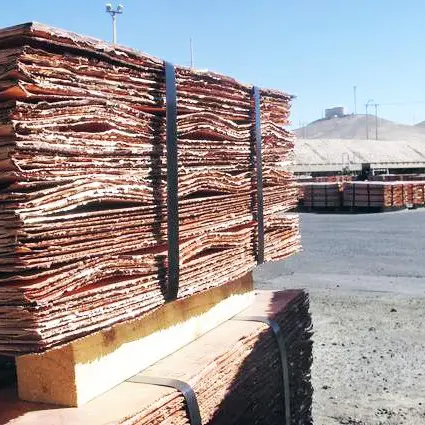PHOTO
Hitachi Energy’s HVDC Light technology and MACHTM digital control platform1 will enable the transfer of cleaner and more efficient power from the mainland to power Adnoc’s offshore production operations, enabling a carbon footprint reduction of Adnoc’s offshore operations by more than thirty percent.
This innovative solution reinforces Hitachi Energy’s commitment to helping customers and countries to transition towards a carbon-neutral future and help enable the ‘2050 Net-Zero Initiative’ of the UAE.
With a capacity of 3,200 megawatts (MW), the two HVDC links will be by far the most powerful power-from-shore solution in the Middle East and North America (Mena) region to date. It is also the first HVDC power-from-shore solution outside Norwegian waters. This innovative solution reflects how Hitachi Energy continues to pioneer technology to address the growing interest from national and independent oil and gas companies to power their offshore production facilities with carbon-free energy from onshore power grids.
“We are proud to be enabling Abu Dhabi and Adnoc to make significant progress on their pathway toward achieving the United Arab Emirates’ ambition to be carbon-neutral by 2050,” said Claudio Facchin, CEO of Hitachi Energy. He continued, “At Hitachi Energy we are championing the urgency of the clean energy transition, and this major order is further evidence that we are a ‘go to’ partner for developing and deploying technologies and solutions that are advancing the world’s energy system to be more sustainable, flexible and secure.”
SH Kim, Procurement Manager at Samsung C&T Corporation, said: “In Hitachi Energy, we have selected a trusted partner who brings deep global competence and a strong mindset of collaboration and innovation.” SH Kim continued, “Together, we will serve Adnoc with pioneering technologies that are proven to deliver for such a large HVDC project.”
The entire power-from-shore project will comprise two HVDC power links, which will con-nect two clusters of offshore oil and gas production facilities to the mainland power grid, a distance of up to 140 kilometers for each cluster.
Hitachi Energy is supplying four converter stations, which convert AC power to DC for transmission in the subsea cables, then reconvert it to AC from DC for use in the offshore power systems. The HVDC technology will be supplied from Hitachi Energy’s global competence centers. Also included in the order are system studies, design and engineering, supply, installation supervision and commissioning. Hitachi Energy will support the customers with a long-term life-cycle service agreement leveraging digital technologies to ensure system availability and reliability over the HVDC links’ long operating life.
HVDC Light is a voltage source converter technology that was pioneered by Hitachi En-ergy. It is the preferred technology for many grid applications, including interconnecting national power grids, integrating offshore wind parks with mainland transmission systems, feeding more power into congested city centers, interconnecting asynchronous networks that operate at different frequencies, and power from shore.
HVDC Light’s defining features include uniquely compact converter stations (which is extremely important in space-critical applications like offshore wind, offshore production facilities and city-center infeeds), exceptionally low electrical losses, and black-start capa-bility to restore power after a grid outage.
Hitachi Energy pioneered commercial HVDC technology almost 70 years ago and has delivered more than half of the world’s HVDC Classic projects and more than 70 per cent of the world’s voltage source conversion HVDC projects.
Copyright © 2021 Khaleej Times. All Rights Reserved. Provided by SyndiGate Media Inc. (Syndigate.info).























